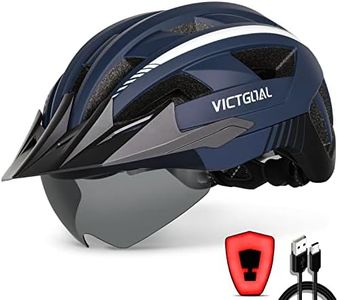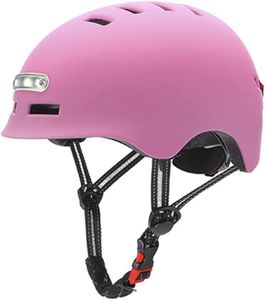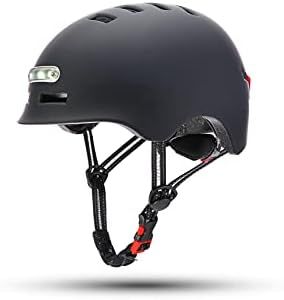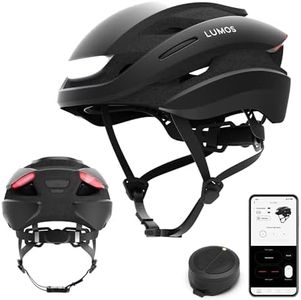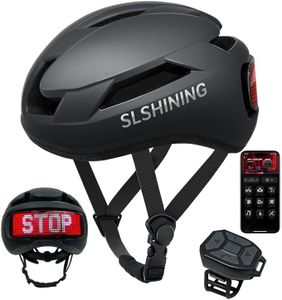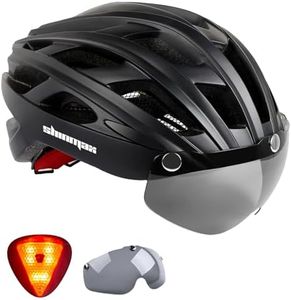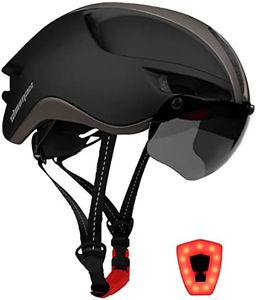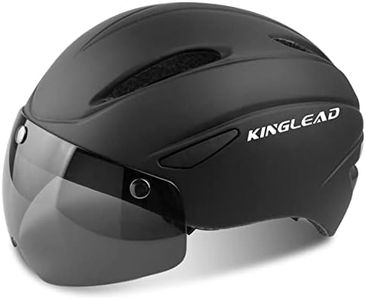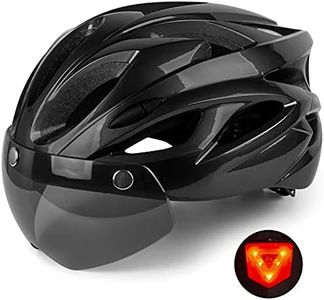We Use CookiesWe use cookies to enhance the security, performance,
functionality and for analytical and promotional activities. By continuing to browse this site you
are agreeing to our privacy policy
10 Best Smart Bike Helmets
From leading brands and best sellers available on the web.Buying Guide for the Best Smart Bike Helmets
Shopping for a smart bike helmet is different from buying an ordinary helmet. These helmets add technology to the basic protective design, offering features like integrated lights, communication systems, and connectivity to your phone. The key to finding the best fit for you is to balance essential safety with features that suit your daily ride. Think about where and how you cycle—commuting in traffic, group rides, or solo adventures—and which added functions would actually improve your cycling experience.Safety CertificationsSafety certifications prove the helmet meets minimum standards for impact protection in your region, such as CPSC in the US or CE in Europe. This is crucial because, regardless of smart features, a helmet's main purpose is to protect your head. Always look for these certifications first, and don't compromise on them. Helmets that meet the latest certifications are safest, while uncertified helmets should be avoided.
Fit and ComfortA well-fitting helmet stays snug on your head without causing discomfort, and proper fit dramatically increases safety. Most smart helmets come in small, medium, and large, sometimes with an adjustable dial. To choose, measure the circumference of your head just above your eyebrows. If your head is between sizes, always try on before buying. Features like adjustable straps and removable padding improve comfort and fit.
Integrated LightingIntegrated lights improve your visibility to drivers, especially in low-light conditions. Some helmets have front and rear lights, sometimes with turn signals. Basic systems offer constant and blinking lights; advanced ones can sync with your bike or phone. If you ride at night or in traffic, opt for models with bright, multi-function lights. If you ride only in daylight or off-road, you might need less lighting.
Connectivity and Smart FeaturesSmart helmets connect to your phone using Bluetooth or other wireless technologies. They can offer features like hands-free calling, music playback, navigation prompts, and integration with ride apps. The level of connectivity varies: basic models may allow only phone calls, while advanced versions include voice commands and safety notifications. Consider what you really need—if you value calls and music, look for reliable audio quality; for navigation, check for clear prompts. If you only need a helmet, these aren’t as important.
Battery Life and ChargingAll smart functionality relies on built-in batteries, so battery life determines how often you’ll need to recharge. Short trips and infrequent usage are fine with shorter battery life, but commuters or tourers will want as much as possible. Battery life can range from a few hours to several days depending on lighting and smart features in use. Make sure charging is convenient—look for USB charging ports and battery level indicators.
WeightAdding electronics can make a helmet heavier than standard versions. Lighter helmets are generally more comfortable on long rides, but some extra weight is inevitable with more features. If you’re sensitive to helmet weight or you ride for hours, prioritize lighter smart models. For short urban trips, the weight difference is less noticeable.
VentilationGood ventilation keeps your head cool and dry, particularly during summer or hard rides. Smart helmets may have fewer or smaller vents to accommodate electronics, which can make them warmer than standard designs. If you ride in hot weather or sweat easily, look for models with a good number of airflow vents and interior channeling. For short commutes or cooler climates, ventilation may be less critical.
